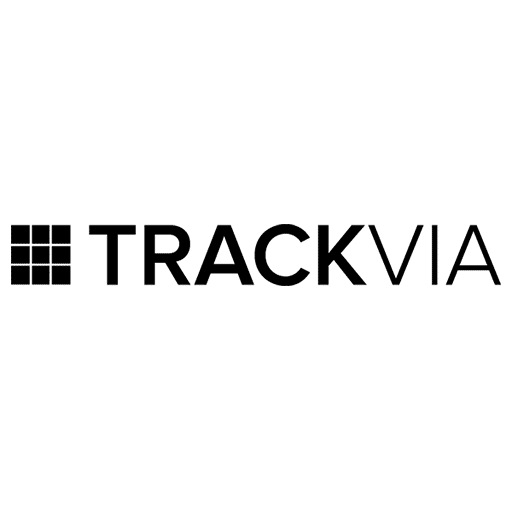How This Marketing Needs and Budget Estimator Sets Your Plan Quickly
Learn How This Marketing Needs and Budget Estimator Sets Your Plan Quickly.
Marketing Needs and Budget Estimator
Unlock the full potential of your marketing strategy with our Marketing Needs & Budget Estimator.
Designed for businesses ready to grow smarter, this powerful tool delivers personalized insights to help you align your goals, prioritize key initiatives, and invest your budget confidently.
Whether launching a new product, scaling operations, or refining your digital presence, our estimator gives you a clear, data-driven starting point to make informed decisions that drive measurable results.
Start planning smarter and take the guesswork out of your marketing investment today.
Unlocking Business Growth Through Strategic Innovation: Key Statistics Every Leader Should Know
In today’s competitive landscape, innovation is no longer optional—it’s a business imperative. Companies prioritizing innovation outperform their peers in growth, profitability, and market relevance.
According to a McKinsey Global Innovation Survey, 84% of executives agree that innovation is critical to their growth strategy, yet only 6% are satisfied with their innovation performance.
This gap highlights a significant opportunity for businesses willing to invest in forward-thinking strategies.
Research from Boston Consulting Group reveals that companies in the top quartile of innovation performance achieve 2.6 times higher revenue growth than those in the bottom quartile.
Furthermore, Deloitte reports that organizations with a strong innovation culture are 3.5 times more likely to outperform their competitors in revenue growth.
Digital transformation is a key driver of this innovation. A study by PwC found that 60% of executives believe digital transformation will be the biggest growth driver in the next five years. Yet, only 27% of businesses have a clearly defined digital strategy, leaving a vast majority vulnerable to disruption.
Investing in innovation doesn’t just fuel growth—it also enhances resilience. IBM data shows that innovative companies recovered from economic downturns 30% faster than their less innovative counterparts. This agility can distinguish between thriving and merely surviving in an unpredictable economy.
Adopting innovation is essential for business leaders who want to future-proof their organizations. By aligning strategic goals with innovative practices, companies can unlock new revenue streams, improve customer experiences, and gain a sustainable competitive edge.
📊 Marketing Needs & Budget Estimator
Streamline Your Strategy with the Marketing Needs & Budget Estimator
Take the Guesswork Out of Marketing Planning
In today’s fast-paced digital landscape, it is critical to understand what your business truly needs to succeed and how much it will cost.
The Marketing Needs & Budget Estimator from Matrix Marketing Group is a powerful tool designed to help businesses of all sizes align their marketing goals with realistic budgets.
Whether launching a new product, expanding into new markets, or simply trying to increase brand visibility, this estimator gives you a clear, data-driven starting point.
Why You Need Expert Guidance
Even with the right tools, developing an effective marketing strategy requires deep industry insight.
Matrix Marketing Group brings decades of experience to help you interpret your estimator results and turn them into actionable plans.
From identifying high-ROI tactics to allocating resources efficiently, our team ensures your marketing investment delivers measurable results.
Customized Solutions for Maximum Impact
Every business is unique.
That’s why Matrix Marketing Group offers tailored support based on your estimator inputs, ensuring your marketing efforts are well-funded and strategically sound.
With expert help, you can avoid costly missteps, accelerate growth, and stay ahead of the competition.
Our Amazing Clients.
For nearly two decades, we have forged partnerships with companies that aspire to minimize waste, gain a competitive edge, and truly prioritize the well-being of their stakeholders.






Start Smarter. Market Better.
Use the Marketing Needs & Budget Estimator today and partner with Matrix Marketing Group to transform insights into impact.
Paired with industry models, you have an advantage over your competitors immediately.
Marketing Needs & Budget Estimator
What Success Looks Like
Strategic Alignment with Business Goals
A successful marketing budget directly supports your business objectives—whether that’s increasing brand awareness, generating leads, or driving conversions.
Every dollar should have a purpose, and every initiative should be tied back to measurable outcomes.
Data-Driven Forecasting
Success means leveraging historical data, industry benchmarks, and market research to project realistic budget allocations.
Use tools and past performance to inform future investments and avoid guesswork.
Agility and Scalability
A well-structured marketing plan allows for flexibility.
Whether it’s adjusting spend mid-campaign or scaling successful initiatives, the ability to pivot quickly is key to staying competitive.
Setting Realistic Expectations
Budget Allocation by Channel
Expect to distribute your budget across multiple channels, including digital advertising, content creation, SEO, social media, email marketing, and more.
Each channel plays a different role in the customer journey and requires varying levels of investment.
Timeframe for Results
Marketing is not an overnight solution.
Depending on your strategy, meaningful ROI may take several months.
Paid campaigns might show faster results, while organic efforts like SEO and content marketing typically require longer lead times.
Return on Investment (ROI)
ROI varies by tactic and industry. Set benchmarks based on your business model and goals.
For example, a SaaS company might focus on customer acquisition cost (CAC), while an eCommerce brand may prioritize return on ad spend (ROAS).
Marketing Agency ROI Forecast Calculator
Enter your budget and current sales to calculate your current ROI. Then select services to forecast your ROI uplift. Powered by MatrixLabX NeuralEdge.
Powered by MatrixLabX NeuralEdge — AI Marketing That Thinks Ahead.
Common Mistakes to Avoid
Underestimating Total Costs
Marketing involves more than just ad spending. It also involves tools, software, creative development, staffing, and ongoing optimization.
A comprehensive budget prevents surprise expenses and underperformance.
Setting Goals Without Metrics
Vague goals like “get more traffic” or “increase engagement” lead to unclear strategies.
To measure success accurately, define KPIs such as conversion rate, lead quality, or customer lifetime value.
Neglecting Testing and Optimization
A “set it and forget it” approach wastes budget. Allocate time and resources for A/B testing, performance analysis, and iterative improvements.
Optimization is where campaigns evolve from good to great.
Ignoring the Customer Journey
Focusing too heavily on one stage of the funnel, like awareness or conversion, can lead to missed opportunities.
Budget should support the full journey, from attracting attention to nurturing leads and driving loyalty.
Start Smart with an Estimator
Clarify Your Goals
Begin by identifying your goals. Are you launching a new product, entering a new market, or aiming for steady growth?
Your objectives shape your budget and channel mix.
Use Benchmarks as a Guide
As a baseline, compare your industry’s average marketing spend, typically 7–12% of gross revenue. Adjust based on your growth stage, competition, and internal resources.
Customize for Your Business
Every business is unique. An estimator tool will input your revenue, goals, and current capabilities.
The output should offer a tailored recommendation that aligns your marketing needs with a practical budget.
Pro Tip: Revisit your estimator quarterly. As business goals shift, your budget should evolve with them. Frequent assessments keep your strategy aligned and your spending efficient.
AI Integration in Marketing
Nearly 60% of marketers now rely on AI to streamline processes, generate content, and analyze data, a trend expected to grow in 2025, underscoring the role of AI-driven DMaaS platforms in modern marketing strategies. See pricing.
Marketing Needs & Budget Estimator
Plan smarter, spend better, and align your marketing strategy with your business goals.
Our step-by-step Marketing Needs and Budget Estimator is designed to help you identify your needs, prioritize your initiatives, and estimate a realistic marketing budget based on your objectives.
Step 1: Define Your Business Goals
Before building your marketing plan, you must clearly define what success looks like.
Why this step matters: Your marketing strategy should directly support your business objectives—increasing brand awareness, generating leads, boosting online sales, or launching a new product. Without clear goals, estimating the resources you’ll need is impossible.
Tips for success:
- Be specific: Instead of “grow sales,” try “increase online sales by 25% in Q3.”
- Align goals with your growth stage: Startups may prioritize brand awareness, while mature companies focus on retention.
- Use SMART goals: Specific, Measurable, Achievable, Relevant, Time-bound.
Pro Tip: Involve key stakeholders early to ensure departmental goals are aligned.
Step 2: Identify Your Target Audience
Knowing who you’re marketing to is essential for building an effective strategy.
Detailed guidance:
- Define your ideal customer: age, location, job title, industry, challenges, and behaviors.
- Use existing data: Analyze your CRM, website analytics, and customer feedback.
- Segment your audience: You may have multiple customer personas with different needs.
Common issues & solutions:
- Issue: “We serve everyone.” Fix: Narrow your focus. A broad audience dilutes your message and wastes budget.
- Issue: “We don’t have enough data.” Fix: Use surveys, social media insights, and competitor research to fill gaps.
Step 3: Select Your Marketing Channels
Choose the right mix of platforms to reach your audience effectively.
Supporting details:
- Match channels to audience behavior: Are they on LinkedIn, Instagram, or email?
- Consider your goals: Social media builds awareness; PPC drives immediate traffic; SEO supports long-term visibility.
- Evaluate internal capabilities: Do you have the expertise in-house or need to outsource?
Channel categories to consider:
- Digital: SEO, PPC, Email, Social Media, Content Marketing
- Traditional: Print, Radio, Events, Direct Mail
- Hybrid: Webinars, Influencer Marketing, Sponsorships
Tip: Start small, test, and scale. Focus on 2–3 core channels before expanding.
Step 4: Estimate Resource Needs
Understand what it takes to execute your strategy—people, tools, and time.
Substeps:
- List required roles: Content creators, designers, ad specialists, analysts.
- Identify tools: CRM, marketing automation, design software, analytics platforms.
- Time allocation: How many hours/week will each initiative require?
Helpful resource estimation template:
| Initiative | Personnel Needed | Tools Required | Estimated Hours/Month |
| Social Media Ads | Ad Manager | Meta Ads Manager | 20 |
| Email Campaigns | Copywriter | Mailchimp | 15 |
| SEO Blog Content | Content Writer | SEMrush, WordPress | 30 |
Step 5: Allocate Your Budget
Now that you know what you need, it’s time to assign dollar amounts.
How to approach it:
- Start with your annual revenue: Allocate 5–12% depending on growth goals.
- Break down by channel: Use benchmarks (e.g., 30% to digital ads, 20% to content).
- Factor in fixed vs. variable costs: One-time setup fees vs. ongoing expenses.
Budgeting tips:
- Leave room for testing and contingency (~10% of total budget).
- Prioritize ROI-positive channels once performance data is available.
- Review and adjust quarterly.
Step 6: Review, Refine, and Finalize
Your first estimate is a starting point. Refine it based on feasibility, priorities, and feedback.
Checklist for review:
- Do your resources match your goals?
- Are timelines realistic?
- Are you overcommitting on any channel?
Next steps:
- Present your plan to stakeholders for buy-in.
- Set KPIs for each initiative.
- Schedule regular performance reviews to adjust your budget accordingly.
Use this Marketing Needs and Budget Estimator to build an intentional, data-driven, and financially sound strategy. Start with clarity, plan with purpose, and execute with confidence.
Case Studies: Successful Deployments of the Marketing Needs & Budget Estimator
1. Elevate Apparel – Streamlining Marketing Strategy with Data-Driven Budgeting
Elevate Apparel, a mid-sized fashion retailer, faced challenges aligning its marketing spend with seasonal trends and customer acquisition goals.
Implementing the Marketing Needs & Budget Estimator gave the company real-time insights into campaign requirements, optimal budget allocation, and ROI projections. Within six months,
Elevate Apparel reduced marketing waste by 22% and increased lead conversion by 35%. The tool enabled the marketing team to prioritize high-impact channels and plan more effectively for quarterly campaigns.
2. NovaTech Solutions – Enhancing B2B Outreach with Scalable Budget Planning
NovaTech Solutions, a growing B2B SaaS provider, struggled with inconsistent marketing performance across different regions.
After deploying the Marketing Needs & Budget Estimator, the company quickly identified underperforming channels and redirected funds toward more effective digital strategies.
The estimator’s customized recommendations helped NovaTech increase its marketing efficiency by 28% and expand its lead pipeline by 40% in four months.
With clear budget forecasts and campaign benchmarks, the company confidently scaled its outreach.
3. GreenFields Organics – Aligning Marketing Goals with Business Growth
GreenFields Organics, a regional food distributor, needed a better way to align its marketing goals with aggressive expansion plans.
The Marketing Needs & Budget Estimator provided a tailored roadmap for budget planning based on market size, competition, and growth targets.
Using the tool, GreenFields reduced over-budget campaigns by 30% and improved cross-channel integration.
The estimator also enabled better collaboration between marketing and finance teams, leading to more accurate quarterly forecasts and strategic alignment.
4. Beacon Financial Group – Driving ROI with Precision Marketing Budgets
Beacon Financial Group, a mid-sized financial services firm, sought to improve marketing ROI while navigating regulatory constraints.
The Marketing Needs & Budget Estimator delivered actionable insights into customer acquisition costs, channel effectiveness, and compliance-friendly strategies.
Within five months, Beacon Financial saw a 25% improvement in campaign ROI and a 15% reduction in customer acquisition costs.
The tool empowered the team to invest confidently in digital campaigns and track performance against clear benchmarks.
These companies leveraged the Marketing Needs & Budget Estimator to gain clarity, control, and confidence in their marketing investments, proving that data-driven budgeting is essential for sustainable growth.
Conclusion: Maximize Your Strategy with the Marketing Needs & Budget Estimator
Successfully navigating your marketing journey begins with clarity, and the Marketing Needs & Budget Estimator is your essential first step.
Throughout this guide, we’ve covered the key stages of identifying your business objectives, evaluating your current marketing efforts, determining the right channels, and estimating a realistic budget that aligns with your goals.
By assessing your marketing needs, you clearly understand where your brand stands and where it needs to go. From defining your target audience to selecting the most effective tactics, each step builds a strategic foundation for measurable growth.
The budget estimator brings it together, helping you allocate resources efficiently and confidently invest in the right areas.
Completing this process empowers you to make informed decisions, avoid overspending, and ensure your marketing efforts are aligned with business outcomes. Whether launching a new campaign, scaling your business, or refining your current strategy, the insights gained here are designed to drive smarter, more effective marketing.
The benefits are clear: improved ROI, stronger brand visibility, and a more focused customer acquisition and retention approach.
But the real value lies in taking action. Use this estimator regularly to stay agile and responsive to market changes. Revisit your goals, adjust your budget, and refine your strategy based on performance data.
Marketing success doesn’t happen by chance—it’s built on informed planning, consistent execution, and continuous improvement. Now that you’ve completed the Marketing Needs & Budget Estimator, you can move forward confidently and clearly.
Start applying what you’ve learned today. Reassess quarterly, test new channels, and stay engaged with your analytics.
The more you practice strategic planning, the more efficient and impactful your marketing will become. Your business deserves a marketing strategy that works—this is your roadmap to making it happen.





